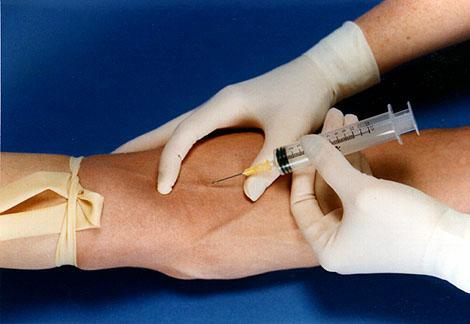
|
![]() DoctorHelps
|
Clinical Biochemical Genetics
DoctorHelps
|
Clinical Biochemical Genetics
Blood sampling for biochemical analysis is typically conducted on an empty stomach. Blood for this analysis is taken from a vein. The correct deciphering of the biochemical analysis of blood and knowledge of normal values allows very accurately determine violations in water-salt metabolism, imbalance of trace elements, inflammatory processes and infections, as well as the status of various organs.
Biochemical analysis of blood, normal values:
Total protein - total concentration of proteins consisting of amino acids. Accepts direct participation in supporting the blood Ph, in coagulation and transportation of various substances in the organs and tissues.
- Norm: 64-84 g / l.
- When exceeding normal parameters it can talk about infectious disease, arthritis, rheumatism or cancer.
- Under reduced protein: liver disease, bowel, kidney or cancer.
Hemoglobin - erythrocyte specific protein responsible for transporting oxygen through the body.
- Norm: male - 130-160 g / L, women - 120-150 g / l.
- Reduced hemoglobin may indicate the presence of anemia.
Haptoglobin - protein responsible for maintaining the iron in the body (Hp1-1 types, Hp2-1, Hp2-2).
- Norm: children - 250-1380 mg / l, adults - 150-2000 mg / l, the elderly - 350-1750 mg / l.
- Reducing the level of haptoglobin may indicate an autoimmune disease, liver disease, or an increase in spleen red cell membrane defects.
- Increased levels observed in malignant tumors (lung, breast, colon or genital).
Glucose - the most important blood component that is responsible for carbohydrate metabolism. Its content in the arterial blood is higher than in venous blood.
- Norm: 3,30-5,50 mmol / l.
- High glucose levels can talk about the threat of diabetes type 1 or 2, or of impaired glucose tolerance.
Urea - the main product of protein breakdown.
- Norm: 2,5-8,3 mmol / l.
- Increasing the level of urea in the biochemical analysis of blood indicates a poor kidney function, heart failure, tumors, bleeding, intestinal obstruction or blockage of the urinary tract. Short-lived increase in the content urea may occur after intense exercise or physical activity.
Creatinine - indicator of work a kidney, is involved in energy metabolism of tissues.
- Norma (depending on the muscle mass): male - 62-115 mmol / l, female - 53-97 mmol / l.
- Increasing the level usually indicates renal failure, or hyperthyroidism.
Bilirubin - yellow-red blood pigment formed by the breakdown of hemoglobin.
- Norma (total bilirubin): 5-20 mmol / l.
- High levels may be the cause of cancer or liver disease, hepatitis, poisoning or symptoms of liver cirrhosis, gallstones, or a lack of vitamin B12.
Cholesterol - component of fat metabolism, is involved in the construction of cell membranes and the synthesis of sex hormones and vitamin D.
- Norm (total cholesterol): 3.5-6.5 mmol / l.
- Elevated levels indicate the risk of atherosclerosis, cardiovascular system or liver.
Alanine aminotransferase ( ALT ) - enzyme liver found in cells of liver, kidney and heart. It enters the bloodstream at destruction the cells of these organs.
- Norm: male - to 41 U / L, women - up to 31 U / L.
- High levels of ALT in the blood speaks of the defeat of the heart or the liver and serious diseases: hepatitis, cirrhosis, liver cancer, heart attack, heart failure or myocarditis.
Aspartate aminotransferase (AST) - the cellular enzyme, located in the cells of the heart, liver and kidneys. Participates in amino acid metabolism.
- Normal: male - to 41 U / L, women - up to 31 U / L.
- Elevated AST in the blood can cause a heart attack, hepatitis, pancreatitis, liver cancer, or heart failure.
Lipase - an enzyme produced for digestion of fats (triglycerides). Especially important is the pancreatic lipase.
- Norm: 0-190 U / L.
- Increased blood lipase shows symptoms of pancreatic disease.
Amylase - breaks down carbohydrates from the food provides their the digestion. Contained in the salivary glands and the pancreas. There are alpha amylase (diastase) and pancreatic amylase.
- Norm (alpha-amylase): 28-100 U / L .; Pancreatic amylase: 0-50 U / L.
- The high content of amylase in the biochemical analysis of blood indicates: peritonitis, pancreatitis, diabetes, pancreatic cysts, stones, cholecystitis, or renal failure.
Leave a Comment